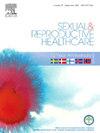将计划生育与生殖健康服务相结合:多案例研究协议
IF 1.7
3区 医学
Q3 PUBLIC, ENVIRONMENTAL & OCCUPATIONAL HEALTH
引用次数: 0
摘要
背景低收入和中等收入国家在提供计划生育服务方面存在严重差距,阻碍了获得计划生育服务。将计划生育服务与现有保健服务结合起来,是提高其可及性的一个有希望的解决办法。这项多案例研究旨在分析倡议并制定适用于各种资源有限环境的框架。本研究的目的是分析关于计划生育服务与其他生殖健康服务整合的国家文件,确定不同整合实例中的推动因素和障碍,并比较选定国家的计划生育整合举措。在本文中,案例被定义为将计划生育服务纳入中低收入国家医疗机构现有生殖健康服务的具体干预措施。方法采用文献分析和定性调查相结合的研究方法。将分析由选定国家的政策、准则、战略计划和一揽子保健服务组成的国家文件。定性数据将通过与关键利益相关者的20-25次半结构化虚拟访谈收集。这些关键信息提供者将是医疗保健提供者、研究人员、政策制定者和卫生管理人员。数据分析将使用演绎和归纳方法,应用彩虹模型的临床、专业、组织、系统、功能和规范集成的六个关键维度。本文将确定整合计划生育服务的过程,这是一种结构化的、适应性强的方法,用于将计划生育服务与资源匮乏环境中的其他生殖健康服务相结合,并解决卫生系统在提供计划生育服务方面的差距。本文章由计算机程序翻译,如有差异,请以英文原文为准。
Integrating family planning with reproductive health services: A multi-case study protocol
Background
Critical gaps exist in the provision of family planning services in low and middle-income countries (LMICs), hindering access. Integrating family planning services with existing health services offers a promising solution to enhance its accessibility. This multi-case study aims to analyse initiatives and develop a framework applicable to diverse resource-limited settings. The objectives of this study are to analyse national documents on FP services integration with other reproductive health service, identify enablers and barriers among different integration examples, and to compare among FP integration initiatives from selected countries. For this paper, cases are defined as specific interventions where family planning services have been integrated into existing reproductive health services at healthcare facilities of LMICs.
Methods
This study will employ national document analysis and qualitative inquiry. The national documents consisting of policies, guidelines, strategic plans and health services packages of selected countries will be analysed. The qualitative data will be collected through 20–25 semi-structured virtual interviews with key stakeholders. These key informants will be healthcare providers, researchers, policy makers and health managers. The data analysis will use both deductive and inductive approaches, applying the six key dimensions of clinical, professional, organisational, system, functional, and normative integration of the Rainbow Model.
Discussion
This paper will identify the process of integrating FP services, a structured, adaptable approach for integrating family planning services with other reproductive health services in low resource settings and addressing health system gaps in family planning service delivery.
求助全文
通过发布文献求助,成功后即可免费获取论文全文。
去求助
来源期刊

Sexual & Reproductive Healthcare
PUBLIC, ENVIRONMENTAL & OCCUPATIONAL HEALTH-
CiteScore
2.70
自引率
5.60%
发文量
73
审稿时长
45 days
 求助内容:
求助内容: 应助结果提醒方式:
应助结果提醒方式:


